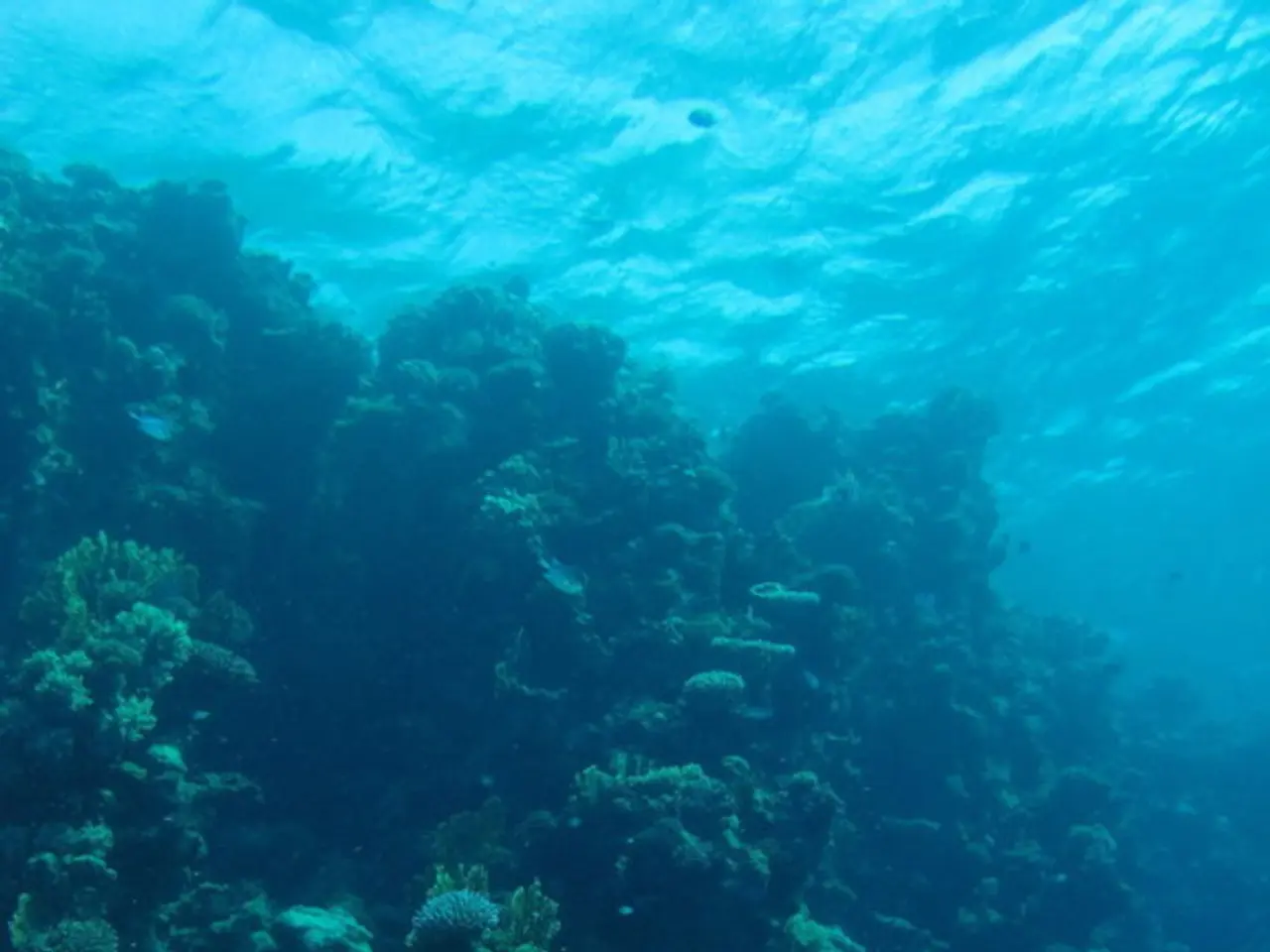North Pacific ocean region now hosting a vast, elongated 'blob' of abnormally warm water
In the vast expanse of the Pacific Ocean, a colossal marine heatwave stretches approximately 5,000 miles, encompassing Japan and reaching as far as the West Coast of the United States. This oceanic phenomenon, often referred to as a "blob" of unusually hot water, has been causing concern among scientists.
Dr. Nathan Mantua, a Senior Scientist at the National Oceanic and Atmospheric Administration, has observed the anomaly and attributes its cause to global warming. He states that the fingerprint of climate change is clearly evident in what is transpiring now in the North Pacific.
The current Northeast Pacific blob ranks as the fourth-largest yet observed, according to NOAA oceanographer Andrew Leising. This heatwave has resulted in sea surface temperature differences from average across the entire North Pacific smashing an all-time record for the month of August, with reliable data stretching back to the late 19th century.
Art Miller, an oceanographer at the Scripps Institution of Oceanography, suggests that the ongoing marine heatwave is very likely confined to a thin mixed layer depth. However, he warns that if the broad ocean basin-wide heat wave persists, it could influence the wintertime storm track associated with the jet stream.
Past Northeast Pacific Ocean blobs have led to a historic die-off of seabirds in coastal Alaska. Heather Renner, supervisory wildlife biologist at the Alaska Maritime National Wildlife Refuge, has reported multiple die-offs of marine mammals, seabirds, and forage fish in Alaskan waters this summer.
The cause of the ongoing marine heatwave is due to persistent anomalous wind conditions associated with stagnant high-and low-pressure areas. Weaker winds and winds blowing in directions that discourage upwelling have contributed to surface water temperatures soaring in recent years.
However, Miller expresses hope that once strong winds from late fall and early winter storms track across the region, they will likely stir up cooler water from below the ocean surface, putting an end to the current blob. He also suggests that the ongoing marine heatwave is likely to prove fleeting, being more surface-based.
Multiple studies have been published that attribute an increase in marine heatwaves and accelerated warming in the North Pacific Ocean to global warming pollution from burning fossil fuels. The North Pacific warmed at the fastest rate of any ocean basin on Earth during the past decade, contributing to Japan's hottest summer on record, featuring its all-time national maximum temperature record of 107.2 degrees Fahrenheit on August 5.
The entire North Pacific Ocean Basin is involved in the current marine heatwave, standing out starkly on weather maps. As the world continues to grapple with the effects of climate change, the ongoing marine heatwave serves as a stark reminder of the far-reaching impacts of global warming on our planet's oceans.
Read also:
- Uncovered: The First Genetic Analysis of Sweet Potatoes Reveals They Originated as Hybrid Species with a Perplexing History and Six Sets of Chromosomes
- Experience the Variety of Wellness Offered by Jasmine Tea
- Emotional and Memory Pathway: Exploring Cingulum Bundle's Intricacies
- Health Updates: Brief Snippets of Latest Health Developments Today




